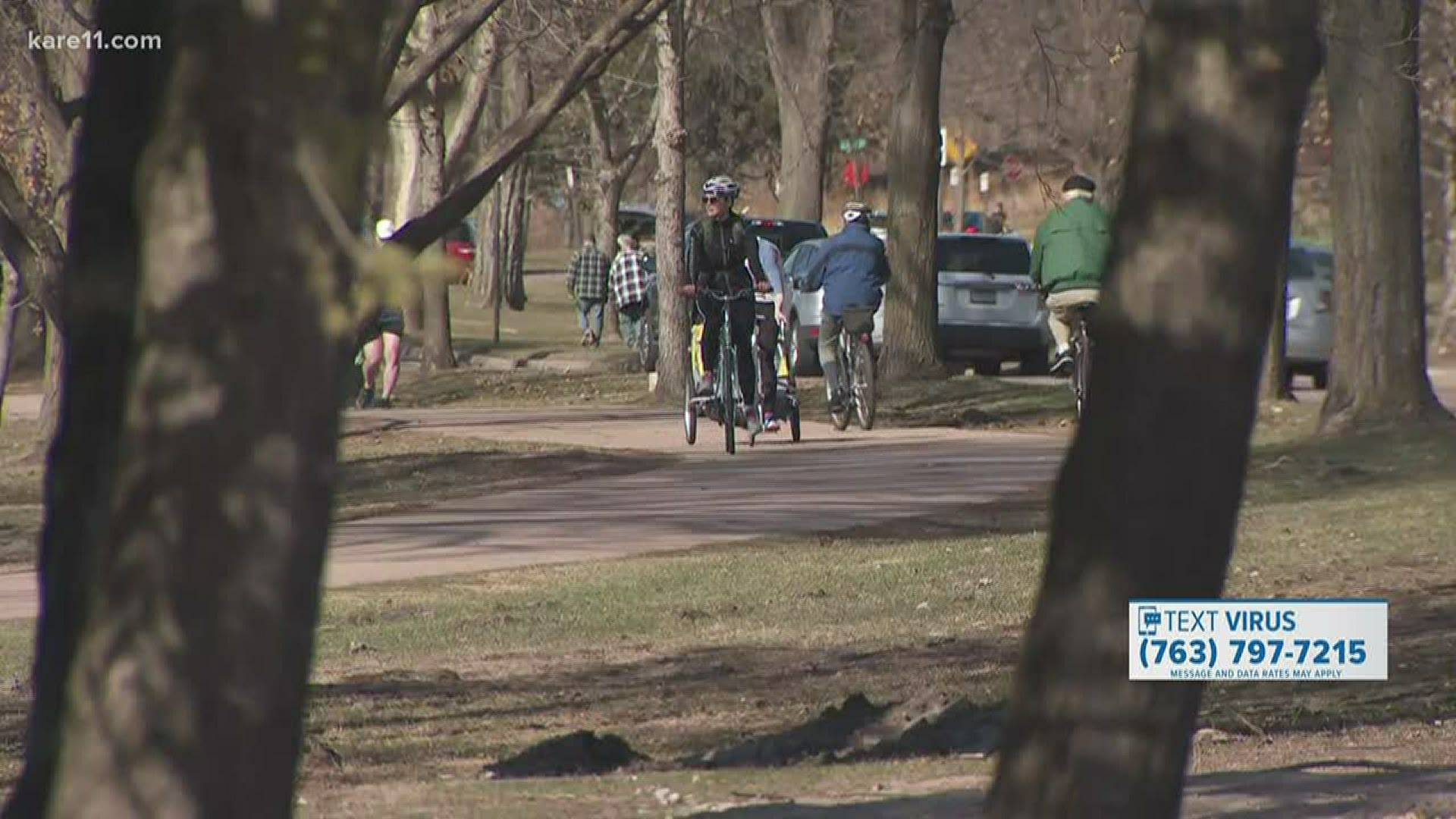MINNEAPOLIS — Being cooped up at home stinks. As we spend more time at home, our desire for the outdoors may be growing at this time. Running, cycling and talking strolls around the neighborhood are all we have right now.
However, this article from Medium.com really puts a downer on all of that.
The article sites a Belgian-Dutch study that concludes that with COVID-19 making the rounds, walking, running or cycling near each other isn't necessarily great because of a thing called "slipstream."
It reads, "When someone during a run breathes, sneezes or coughs, those particles stay behind in the air. The person running behind you in the so-called slip-stream goes through this cloud of droplets."
The article says researchers came to this conclusion after "simulating the occurrence of saliva particles of persons during movement (walking and running) and from different positions (next to each other, diagonally behind each other and directly behind each other)."
It ends by recommending that people walking directly behind each other should be 4–5 meters (13-16 feet) apart. For running and slow biking, it should be 10 meters (approx. 32 feet) apart.
We took these results to Professor Ryan Demmer. Demmer is a professor of Epidemiology and community health at the University of Minnesota.
"There's legitimacy to it to be sure," Demmer said. "There's a publication that came out a week or two ago that looked more carefully at essentially the physics of droplets, even when people sneeze and cough and talk. It does suggest that the range that droplets can travel - droplet nuclei - things that aerosolize and travel greater distances is maybe greater than originally thought."
Demmer says it's difficult to come up with a strict recommendation of how many feet behind another person you should be walking. There are factors like how much virus is in someone's saliva, and how strong the wind is blowing.
"It's hard to say exactly in terms of concentration and particularly how much virus would be in an infected person," he said. "I don't have an exact answer to that, it would depend on how much viral load there was, how infected someone was. Higher in someone who is showing a lot of signs and symptoms."
However, he says he isn't surprised to see research like this slowly popping up. Most of us are new to this, and adapting as we go.
"It's quite likely that the new data similar to the publication a few weeks ago from information you just circulated, that will inform how we view safe distances," he said. "It's hard to predict with any certainty if that's going to change. It wouldn't surprise me that we start revising and refining."
Demmer added that it's important to continue to socially distance. Although he wasn't able to give us specific distances we should be practicing while doing outdoor activities, he did say "six feet is better than three, ten feet is better than six."
KARE 11’s coverage of the coronavirus is rooted in Facts, not Fear. Visit kare11.com/coronavirus for comprehensive coverage, find out what you need to know about the Midwest specifically, learn more about the symptoms, and see what companies in Minnesota are hiring. Have a question? Text it to us at 763-797-7215. And get the latest coronavirus updates sent right to your inbox every morning. Subscribe to the KARE 11 Sunrise newsletter here. Help local families in need: www.kare11.com/give11.
The state of Minnesota has set up a hotline for general questions about coronavirus at 651-201-3920 or 1-800-657-3903, available 7 a.m. to 7 p.m.

